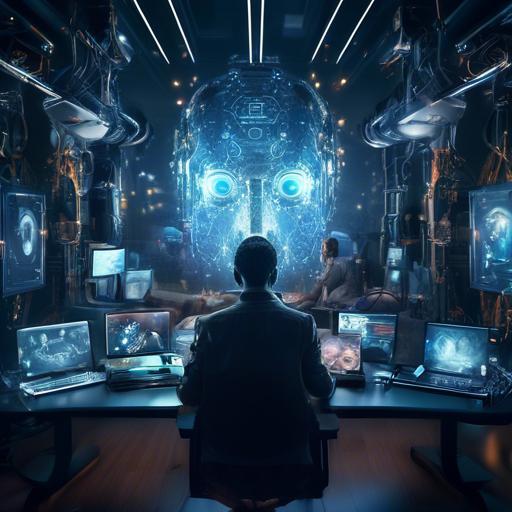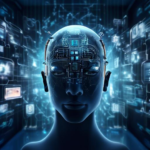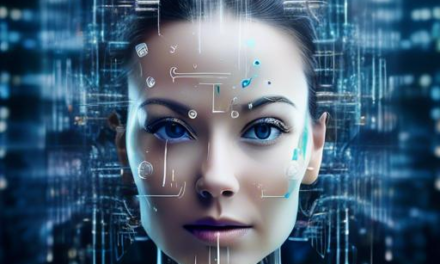In the vibrant universe of video games, where imagination knows no bounds, a new player has entered the arena—Artificial Intelligence. From pixelated landscapes to photorealistic worlds, the role of AI in game design and development is a tale of collaboration between human ingenuity and machine precision. Together, they are crafting experiences that are more immersive, intelligent, and responsive than ever before. This article embarks on a journey through the role of AI in gaming, highlighting how this technological marvel is not just upgrading our hardware, but revolutionizing the very soul of our digital adventures. Whether you are a developer, designer, or an ardent gamer, prepare to discover how AI is transforming dreams into reality, one algorithm at a time.
Table of Contents
- Revolutionizing Storytelling Through AI Narratives
- Smart NPCs: Elevating Gameplay with Artificial Intelligence
- Level Design Innovation: AI’s Secret Weapon
- Dynamic Music and Soundscapes Crafted by Algorithms
- Balancing Gameplay: AI’s Role in Difficulty Adjustment
- Personalized Player Experiences: The Future of Immersive Gaming
- Speeding Up Development: AI Tools for Game Designers
- AI-Powered Quality Assurance and Bug Detection
- Navigating Ethical Implications in AI-Driven Game Development
- To Conclude
Revolutionizing Storytelling Through AI Narratives
Artificial intelligence is stepping into the realm of game design with unprecedented prowess, reshaping the ways narratives are woven and presented. Unlike traditional methods, AI-driven narratives offer **adaptive storytelling** that responds to player actions, creating a more personalized and immersive experience. Imagine walking through a game’s world where the storyline evolves dynamically, aligned with your decisions and play style. This is no longer a distant dream but a burgeoning reality.
- Dynamic Plotlines: AI algorithms can generate plot twists, character developments, and outcomes that are both unpredictable and coherent with the game’s overarching story.
- Enhanced NPC Interactions: Non-playable characters (NPCs) driven by AI become more relatable and engaging, reacting to player inputs in a manner that emulates human behavior.
- Content Personalization: Through analyzing player choices and preferences, AI can tailor content to enhance player satisfaction and engagement.
| Feature | Impact |
|---|---|
| Procedurally Generated Environments | Creates endless, unique game worlds |
| Adaptive Storyline Paths | Makes each playthrough unique |
| Intelligent NPC Behavior | Increases realism and player engagement |
Moreover, AI enables developers to harness data in ways previously unimaginable. By analyzing player data, AI can identify what aspects of the story resonate most with players, leading to enhanced narrative structures in future updates or sequels. This level of insight helps creators to hone their craft, ensuring the delivery of stories that captivate and retain audiences.
AI narratives also democratize game development, allowing smaller studios to compete with industry giants. With the assistance of AI tools, developers can generate rich, complex worlds and storylines without needing large teams or budgets. This paves the way for more diverse stories and voices in the gaming world, contributing to a more vibrant and inclusive community.
Smart NPCs: Elevating Gameplay with Artificial Intelligence
The integration of artificial intelligence into non-playable characters (NPCs) has significantly transformed how players interact with game worlds. These smart NPCs are no longer bound to simplistic and predictable behaviors; instead, they exhibit a level of realism that enhances the immersive experience. By leveraging AI, developers can create NPCs that respond dynamically to player actions, environmental changes, and even other NPCs.
One of the most impactful ways AI elevates gameplay is through adaptive learning. Smart NPCs can analyze player behavior and adjust their strategies accordingly. This results in a more challenging and unpredictable gaming experience. Imagine a tactical shooter where enemy soldiers use advanced AI to outflank and ambush the player based on their last known position. The possibilities are endless and deeply engaging.
Here are key benefits of AI-driven NPCs in games:
- Enhanced Realism: NPCs can simulate human-like behavior, making the game world feel more alive.
- Dynamic Storytelling: AI can drive quests and story arcs based on player interactions, offering a unique narrative for each playthrough.
- Increased Challenge: By learning from player tactics, smart NPCs provide a fresh and challenging experience each time.
- Immersion: Intelligent NPCs can interact with the environment and other characters in more complex and believable ways.
Consider the following examples of AI applications in recent games:
| Game | AI Feature | Impact |
|---|---|---|
| The Last of Us Part II | AI companions and enemies | Realistic team dynamics and challenging enemy encounters |
| Red Dead Redemption 2 | Living World AI | Vibrant, ever-changing environments and NPC interactions |
| Watch Dogs: Legion | Procedural NPC behavior | Each NPC has a unique personality and backstory |
Ultimately, the incorporation of AI in NPC design represents a significant leap forward in game development. It enables the creation of complex, engaging worlds that react and adapt uniquely to every player, fostering a deeper connection and more authentic experience. As AI technology continues to advance, we can only imagine how much more sophisticated and lifelike these digital companions will become.
Level Design Innovation: AI’s Secret Weapon
Innovation in level design has always been at the heart of successful game development. However, the advent of artificial intelligence has supercharged the creativity and efficiency of this critical process. Leveraging AI, developers can push boundaries and craft immersive worlds that adapt and respond to player actions in real-time.
One of the most profound advantages of AI in level design is the capability to create dynamic, procedurally-generated environments. This means every playthrough can offer a unique experience, enhancing replay value and maintaining player engagement. For example, AI can analyze player behavior patterns to customize challenges, ensuring that no two encounters are exactly alike.
AI-driven level design innovation includes:
- Enhanced Personalization: Levels are adapted based on player skills and preferences.
- Procedural Generation: Infinite variations of levels can be created, some never experienced before.
- Real-Time Adaptation: Game worlds adjust difficulty and content dynamically as players progress.
- Cost Efficiency: Reduces need for manual level design, saving time and resources.
Another area where AI shines is in the optimization of game assets and resources. Through machine learning algorithms, developers can streamline texture placement, optimize level layouts for performance, and even generate complex terrains that maintain realism while minimizing computational load.
| Feature | Benefit |
|---|---|
| Procedural Generation | Offers endless variations |
| Personalized Levels | Keeps gameplay fresh and engaging |
| Resource Optimization | Improves performance and reduces costs |
| Adaptability | Responds to player skill levels |
Ultimately, AI is transforming level design from a static process into a dynamic and intelligent system that actively interacts with players, offering a bespoke and continuously evolving gameplay experience. Whether through generating vast, explorable landscapes or fine-tuning each player’s journey, AI has become the secret weapon for developers aiming to create groundbreaking games.
Dynamic Music and Soundscapes Crafted by Algorithms
The integration of AI into the realm of game music and soundscapes is transforming the auditory experience in ways we never imagined. Imagine a gaming environment where the background score adapts dynamically to the player’s actions and the unfolding narrative. **No two players will experience the same soundtrack**, creating a personalized audio journey for each individual.
AI technologies, such as machine learning and neural networks, enable the procedural generation of music and sound effects, ensuring a fresh and engaging soundscape every time the game is played. These algorithms analyze the in-game context and player behavior to generate fitting musical themes and ambient sounds. This means musicians and sound designers can focus on creating unique audio assets while the AI adapts and arranges these assets in real-time.
The following benefits are noteworthy:
- Enhanced Immersion: AI-generated music responds to events, keeping players deeply engaged.
- Cost Efficiency: Reduces the need for extensive pre-recorded tracks, saving time and resources.
- Creative Flexibility: Sound designers can experiment with complex arrangements without manual editing.
- Replay Value: Different musical experiences each playthrough encourage repeated engagement.
AI’s influence stretches beyond just music to sound effects as well. Footsteps, environmental sounds, and even the clinking of armor can all be procedurally generated to match the distinct style of the game. Below is a brief comparison of traditional and AI-generated soundscapes:
| Aspect | Traditional Soundscapes | AI-Generated Soundscapes |
|---|---|---|
| Customization | Limited | Highly Adaptive |
| Resource Intensity | High | Low |
| Replay Value | Limited | High |
With AI at the helm, game developers can push the boundaries of interactive storytelling. Every choice a player makes can trigger a subtle shift in the soundscape, providing subtle cues and emotional depth. The collaborative synergy between AI and human creativity promises a future where game audio is not just heard but felt, making each gaming session a unique adventure.
Balancing Gameplay: AI’s Role in Difficulty Adjustment
One of the remarkable applications of AI in game development is in dynamically adjusting the **difficulty level** to suit the player’s skill. Not only does this maintain player engagement, but it also ensures that frustration and boredom are minimized. Through meticulous analysis of player behavior, AI can fine-tune challenges, creating a personalized gaming experience that feels tailored to each individual’s abilities.
AI techniques such as **machine learning** and **player modeling** allow the game system to learn from various play patterns. For example, if the AI determines that a player is struggling with a particular section, it can reduce the complexity of that segment, either by weakening enemy strengths, offering more resources, or even providing hints. Conversely, for skilled gamers, AI can introduce more formidable obstacles to keep the excitement levels high.
- Real-time Adjustments: AI-driven systems can monitor player progress and adapt the game’s difficulty curve in real-time.
- Personalized Challenges: Different players receive unique game experiences based on their skill level.
- Enhanced Engagement: By maintaining an optimal difficulty level, player engagement and satisfaction are significantly increased.
Besides these dynamic adjustments, AI can also match players in multiplayer games with others of similar skill levels, ensuring that no player feels overpowered or underprepared. This balances the competitive landscape and fosters a more enjoyable and fair environment for all participants. This capability of AI creates a more inclusive environment where everyone, regardless of their skill, can enjoy the game.
| AI Technique | Purpose |
|---|---|
| Machine Learning | Analyze play patterns to adjust difficulty |
| Player Modeling | Create profiles to predict player needs |
| Real-time Monitoring | Make dynamic adjustments based on performance |
Integrating AI for balancing gameplay is not just about making games harder or easier; it’s about creating an adaptable experience that respects the diverse range of player skills. This thoughtful application of technology ensures that every player feels challenged but never overwhelmed, preserving the joy and satisfaction that gaming is meant to provide.
Personalized Player Experiences: The Future of Immersive Gaming
The integration of **Artificial Intelligence (AI)** into game design is revolutionizing the way players interact with virtual worlds. AI-driven systems adapt to individual play styles, ensuring that each gaming experience is as unique as the player themselves. Through machine learning and data analysis, games can now adjust difficulty levels, narratives, and even character responses in real-time, creating a truly immersive and personalized adventure.
- Adaptive Narratives: Storylines evolve based on player choices and play style.
- Dynamic Difficulty: Game challenges scale according to skill level and performance.
- Interactive NPCs: Non-player characters behave differently depending on player actions.
Imagine diving into a fantasy world where the choices you make not only affect the ending but also transform the very fabric of the game’s universe. With AI, developers are crafting branching narratives that consider the player’s decisions, preferences, and even personality traits. This leads to countless possibilities and a gaming experience that feels deeply personal and continually engaging.
Moreover, AI-powered adaptive gameplay ensures that players remain challenged and entertained. Gone are the days of predictable enemy patterns and static puzzles. By analyzing in-game behavior, AI can introduce new tactics, unexpected twists, and varied difficulty levels that keep players on their toes. This fluid, ever-changing environment maintains a player’s interest and satisfaction over longer periods.
| AI Feature | Benefit |
|---|---|
| Behavioral Analysis | Understanding player preferences |
| Procedural Content Generation | Creating varied and dynamic game worlds |
| Predictive Modeling | Anticipating player actions |
AI even empowers non-player characters (NPCs) to exhibit more life-like and unpredictable behaviors. These enhanced interactions result in narratives that feel organic and responsive. Each encounter becomes an opportunity for surprise and deeper connection, making the gaming experience all the more enthralling.
Speeding Up Development: AI Tools for Game Designers
In the realm of game design, **AI tools are revolutionizing the development process** by significantly enhancing speed and efficiency. These advanced tools enable designers to accelerate various phases of game creation, from conception to execution. One major aspect where AI shines is in **procedural content generation**. AI can rapidly create detailed environments, complex characters, and even intricate storylines, which traditionally take months to develop manually.
Another powerful feature of AI is its ability to **automate repetitive tasks**. For instance, game designers often spend countless hours on debugging and optimizing game code. AI algorithms can be applied to quickly identify and resolve coding issues, allowing developers to focus on more creative aspects of game design. This also extends to **game testing**; AI-driven bots can simulate numerous playthroughs, identifying bugs and performance bottlenecks far quicker than human testers.
- Generating high-quality textures and assets
- Creating adaptive AI behaviors for NPCs
- Optimizing network performance for multiplayer games
- Enhancing player customization systems
Moreover, AI can also be utilized to **personalize player experiences**. By analyzing player data, AI can adapt game difficulty in real-time, ensure that challenges stay engaging, and offer tailored content that resonates with individual playstyles. This not only enhances player satisfaction but also **increases retention and engagement**.
Let’s take a look at a few key AI tools that game designers commonly use:
| AI Tool | Description |
|---|---|
| Promethean AI | Automates the creation of rich, interactive game environments |
| GANPaint Studio | Uses GANs to generate and edit intricate textures |
| Unity ML-Agents | Allows developers to train intelligent agents using reinforcement learning |
| TensorFlow | Facilitates deep learning models for predictive analytics in games |
By integrating these AI tools into their workflows, game designers can **foster innovation and creativity** while reducing the time and effort required to bring their visionary gaming worlds to life. Such advancements are not just a glimpse into the future; they are the cornerstone of modern game development, making the impossible possible every day.
AI-Powered Quality Assurance and Bug Detection
In an industry where the user experience is paramount, AI has revolutionized quality assurance and bug detection tasks, enabling developers to identify and address issues more rapidly and effectively. The immersive worlds of video games require meticulous testing, and traditional QA techniques often struggle to keep pace. Enter AI, a powerful ally capable of analyzing vast amounts of data in a fraction of the time, without fatigue or human error.
AI-driven QA systems leverage machine learning algorithms to simulate player behavior, uncovering bugs that might escape the notice of human testers. These systems can autonomously navigate game environments, scrutinize interactions, and identify potential faults by recognizing patterns or anomalies. This not only accelerates the debugging process but also ensures a more comprehensive and consistent quality check across diverse game elements.
Key benefits of incorporating AI in quality assurance include:
- Efficiency: AI tools can run tests round-the-clock, accelerating the identification and resolution of issues.
- Scalability: AI can handle the increasing complexity of modern games, ensuring each aspect is thoroughly tested.
- Precision: The ability to detect subtle glitches and performance bottlenecks that might be overlooked by human testers.
Moreover, AI can substantially reduce costs, both by minimizing the need for extensive human QA teams and by catching critical bugs early, reducing the need for expensive post-launch patches. Consider the following comparison:
| Traditional QA | AI-Powered QA |
|---|---|
| Manual Testing | Automated Testing |
| Susceptible to Human Error | Consistent and Reliable |
| Time-Consuming | Efficient and Fast |
| Fixed Work Hours | 24/7 Operation |
By integrating AI into the development pipeline, studios can deliver games that not only meet but exceed player expectations. This transformative approach ensures stability and enjoyment, fostering a more engaging and satisfying gaming experience.
Navigating Ethical Implications in AI-Driven Game Development
As AI continues to revolutionize game development, developers face increasingly complex ethical considerations. **Balancing innovation with fairness, inclusivity, and transparency** is crucial to fostering an ethical gaming experience. AI algorithms can enhance realism and immersion, but they also present risks, such as biased decision-making or data privacy infringements.
Developers must ensure that AI-driven mechanics do not reinforce harmful stereotypes or exclude minority groups. Here are a few key considerations:
- Bias Mitigation: Implementing diverse datasets can help reduce AI bias in game characters and storylines.
- Transparency: Clearly communicating AI functions and limitations to players can build trust and set realistic expectations.
- Fairness: Designing AI for balanced gameplay ensures that outcomes are not unfairly manipulated, maintaining competitiveness and enjoyment.
Attention must also be given to players’ data. **Privacy** is a growing concern as AI collects more information to provide tailored experiences. Game developers should prioritize data security and adopt practices such as anonymization and secure storage to protect player information.
Understanding the intrinsic link between ethics and technology is fundamental. Here’s a comparative table outlining the benefits and challenges of AI in game development:
| Benefits | Challenges |
|---|---|
| Enhanced Realism | Potential Bias |
| Responsive NPCs | Data Privacy Concerns |
| Dynamic Environments | Transparency Issues |
Making ethical considerations an integral part of the development process can help developers create games that are not only engaging but also respectful and inclusive. The goal is to leverage AI to push the boundaries of creativity while safeguarding player rights and promoting a fair, enjoyable game environment.
To Conclude
As we’ve explored the fascinating world of AI in game design and development, we can’t help but feel excited about the endless possibilities and innovations it brings. From creating dynamic worlds to complex NPCs, AI is revolutionizing the way games are being made and experienced.
As the gaming industry continues to push boundaries and break new ground, we can only imagine the incredible things that AI will accomplish in the future. So next time you pick up a controller or load up your favorite game, remember the integral role that AI plays in making your gaming experience unforgettable.
Embrace the power of AI, and let your imagination run wild as you explore the limitless possibilities of game design and development. The future is bright, and with AI leading the way, the possibilities are truly endless. So go ahead, and let AI inspire you to create the next gaming masterpiece. The adventure awaits!
































